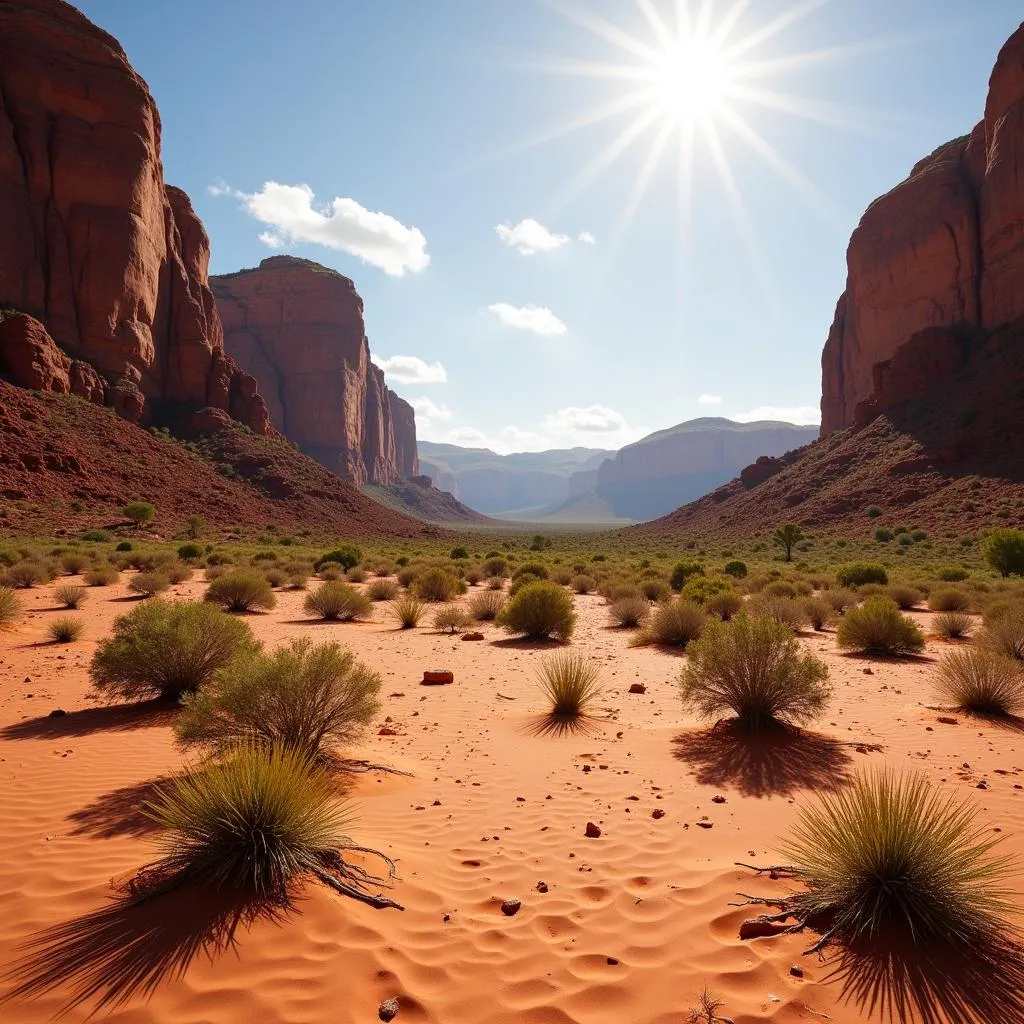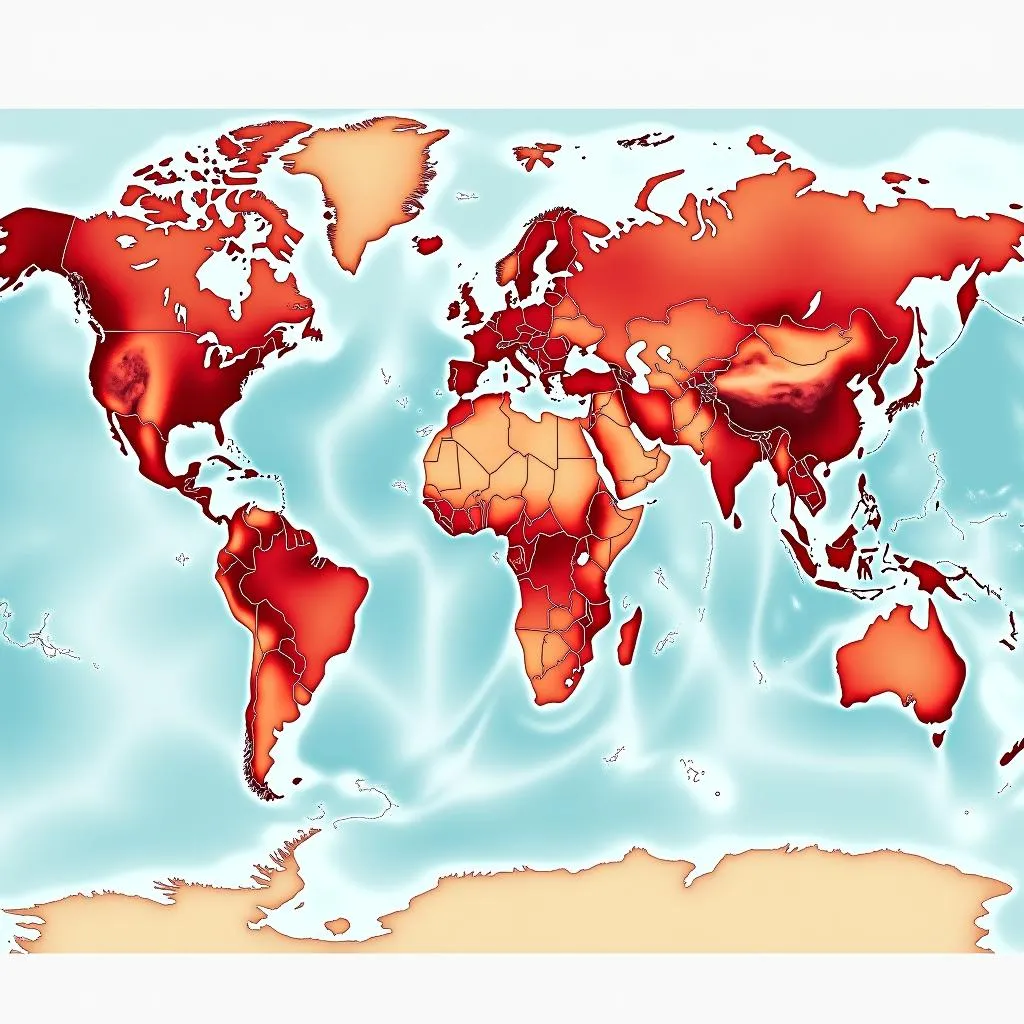Have you ever heard the phrase, “as dry as a desert”? In Vietnam, we might say, “khô như ngói,” meaning “dry as a roof tile.” Both expressions evoke the image of a parched and arid landscape, devoid of life-giving water. But where on Earth can you find these vast stretches of sand and silence? Let’s embark on a journey to uncover the secrets of these intriguing landscapes and discover where most deserts lie.
Unraveling the Myths: It’s Not All About Sand Dunes
While the image of towering sand dunes bathed in the golden glow of the setting sun might be the first thing that pops into your mind when you think of deserts, it’s a bit of a misconception. You see, deserts aren’t defined by their lack of life or even by sand, but rather by their lack of precipitation.
Deserts are regions that receive very little rainfall – less than 10 inches (250 mm) per year, to be precise. They can be hot or cold, sandy or rocky, but the one thing they all have in common is dryness.
Following the Sun: Deserts and the Tropics
So, where do most of these arid landscapes reside? You might be surprised to learn that a significant portion of the world’s deserts lie within two bands known as the subtropics, located just north and south of the equator.
Why the Subtropics? A Tale of Rising and Falling Air
The answer lies in the way air circulates around our planet. Warm, moist air rises near the equator, leading to frequent rainfall in tropical regions. As this air rises, it cools and loses its moisture. This dry air then descends around 30 degrees latitude, both north and south, creating the dry conditions that deserts thrive in. Think of it like a giant conveyor belt of air, constantly moving moisture away from these subtropical regions.
 Subtropical desert landscape with mountains
Subtropical desert landscape with mountains
Beyond the Subtropics: Other Desert Dwellers
But that’s not the whole story. Deserts can also form in other parts of the world due to a variety of factors:
- Rain Shadow Deserts: When mountains block rain-bearing winds from reaching certain areas, a “rain shadow” is created, leading to the formation of deserts. A prime example is the Atacama Desert in Chile, nestled in the rain shadow of the Andes Mountains.
- Coastal Deserts: Cold ocean currents can cool the air above them, reducing its capacity to hold moisture. This often leads to the formation of deserts along coastlines, such as the Namib Desert in southern Africa.
- Interior Deserts: Regions far from large bodies of water, like the Gobi Desert in Central Asia, often receive very little precipitation simply because moist air from the ocean rarely reaches them.
 World map highlighting major desert locations
World map highlighting major desert locations
Deserts and the Human Spirit: A Vietnamese Perspective
Despite their harsh conditions, deserts hold a certain mystique. They are places of stark beauty and unforgiving nature, where survival depends on resilience and resourcefulness. In Vietnamese culture, the image of the desert often symbolizes overcoming challenges and finding strength in adversity.
According to Dr. Nguyen Minh Tuan, a renowned anthropologist from Hanoi University, “The desert, with its vast emptiness, reflects the Buddhist concept of ‘sunyata’ or emptiness. It is a reminder that true peace comes from letting go of attachments and embracing the impermanence of life.”
Exploring the World’s Deserts: Your Adventure Awaits!
From the Sahara Desert’s towering sand dunes to the Atacama Desert’s otherworldly landscapes, each desert offers a unique glimpse into the power and beauty of nature. And what better way to experience these breathtaking landscapes than with the freedom and flexibility of your own vehicle?
Whether you’re dreaming of a desert adventure or simply curious to learn more about these fascinating ecosystems, remember that the world is vast and full of wonders waiting to be discovered.
Need help planning your next adventure?
Contact TRAVELCAR at 0372960696 or [email protected]. We offer a wide range of vehicles for rent, from 16-seater vans to 45-seater buses, perfect for exploring Hanoi and beyond. Our team is available 24/7 to assist you with airport transfers, guided tours, and personalized itineraries. Visit our office at 260 Cau Giay, Hanoi, and let us help you create unforgettable travel memories!

